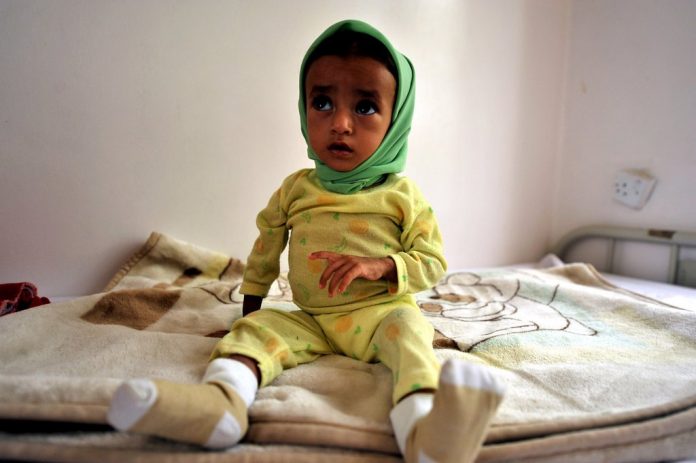Al-Thawra Net
As countries around the globe celebrate World Food Day, millions of Yemenis continue to hope for greater international assistance to alleviate their food insecurity and malnutrition. Yemen currently suffers from the worst humanitarian crisis in the world with 17 million of its people – nearly 60 percent of the country’s population – in “crisis” or “emergency” conditions. The latest Food Security report, issued in September, stated that almost three-quarters of the Yemeni population faces starvation as food security in the country continues to worsen.
According to the report, large-scale acute food insecurity continues to worsen and the October/November harvest will most likely not offset the local food production deficits, adding that 1.25 million civil servants and their families face destitution, economic pain, and poor food purchasing power, as their salaries have been paid irregularly for the past 11 months.
“On the occasion of the World Food Day, it is important not only to remember the commitment we have shown to Yemen – all of Yemen – but how much farther we need go. Complacency is a recipe for disaster. We must not just honor our existing pledges but work earnestly to deliver those and more,” said Salah El-Hajj Hassan, Yemen Country Representative of the Food and Agriculture Organization of the United Nations (FAO).
“One of the areas in which we are active is helping an estimated 3 million internally displaced persons (IDPs) and returnees with food and nutrition assistance so they can sustain themselves and their families, and produce agricultural and dairy products, all the while remaining actively employed until they can return to their homes,” he added. Changing the future of migration by investing in food security and rural development is the primary theme of the 2017 World Food Day.
FAO, which has been active in Yemen since 1990, currently has operations in 13 of Yemen’s 22 governorates across conflict lines, including all the governorates hosting the largest number of food insecure households. Its projects tackle a range of strategic and tactical problems, ranging from providing food assistance and equipment to alleviate immediate needs across the country, to providing training, equipment and knowledge that would boost agriculture infrastructure in a country badly affected by years of poverty and conflict.
Prior to the outbreak of the conflict, Yemen’s agriculture sector employed more than half (54 percent) of the workforce and was the main source of income for 73 percent of the population either directly or indirectly through the services and industries serving the agricultural economy.
However, more than two years of conflict has devastated the economy, including the agriculture sector. Land under cultivation and agricultural production were 38 percent lower in 2016 than before the crisis. Around 2 million people engaged in agriculture now lack access to critical agricultural inputs and are in urgent need of emergency agricultural support.
























